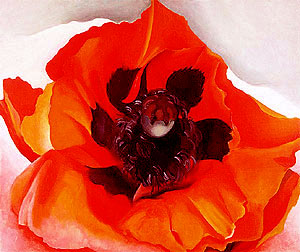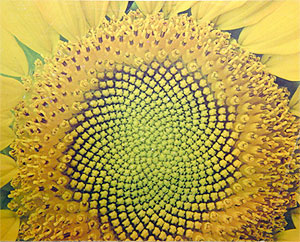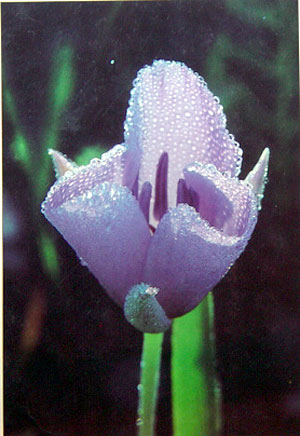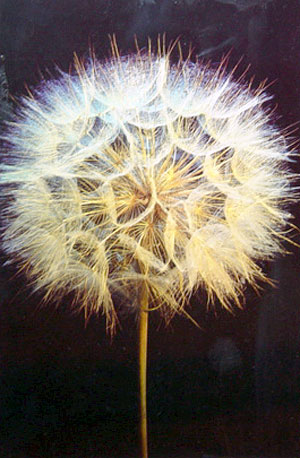Fourth Grade Art Lesson 28
Studying Flowers, Part 1 Looking at "Red Poppy" by Georgia O'Keefe
Objective:
The student will become familiar with the work of Georgia O'Keefe and her painting Poppy. The student will become familiar with flowers by drawing them.
Materials:
Georgia O'Keefe's Poppy, pictures of flowers or actual flowers to observe, pencil and paper
Procedure:
To begin our lesson today I want us to look at a painting by an American artist by the name of Georgia O'Keefe called Poppy. The painting is a large, close up view of a single flower, a red poppy flower, and it takes up the entire canvas. Look closely to see the variations in the color red. We call this value light and dark changes of a single color, in this case red. Notice that we do not see a stem or any leaves. Where in relationship to the flower has the artist put you the viewer? This is called the artists' point of view. It tells us how the artist sees the particular subject they are representing. What other colors do you see in the painting? Does the background give you any clues about where the flower is? We are going to begin a work of art using flowers as our subject. To begin with, we must first become familiar with what flowers actually look like. To do this, we will do drawings of flowers from pictures or from real flowers if you have any available. I want us to show in our drawings our observations about what flowers actually look like. We want to get away from the symbol type flower of the tulip or the simple four petal flower that has been familiar since kindergarten. If you recall earlier in the year we did an experiment where you were to take your shoe, study it for several minutes then draw it from memory. We did a second drawing with the shoe right in front of us and found that when we observed the shoe our drawing was greatly improved. Using that same principle, I want you to spend time looking closely and carefully observing every detail of the flower you chose to draw. Notice the shape of the petals. Count how many petals you see, look at the center of the flower and copy exactly what you see. Go through this process with four or five different flowers so that you can look at the similarities and differences in a variety of flowers. Once you have the drawings complete, you may then design your own flower, based on what you have learned about how flowers are put together, or you can chose a favorite from your study drawings. Next lesson we will begin working with the flower to create an oil pastel drawing.
Conclusion:
Today we have looked at a famous painting by Georgia O'Keefe called Poppy. We have examined how she has used many values of the color red to show the petals of the flower and learned about point of view. To be more aware of how flowers are put together we spent our time studying them by carefully observing them and drawing what we see. Keep these drawings to use in our next lesson
Artwork and Examples used in this lesson

Georgia O’Keefe, “Poppy”

Flower Example

Flower Example

Flower Example













